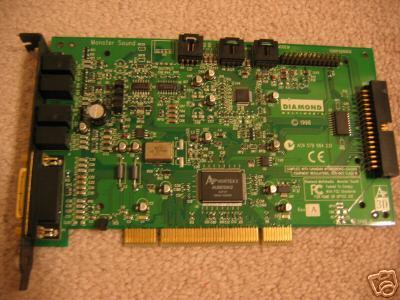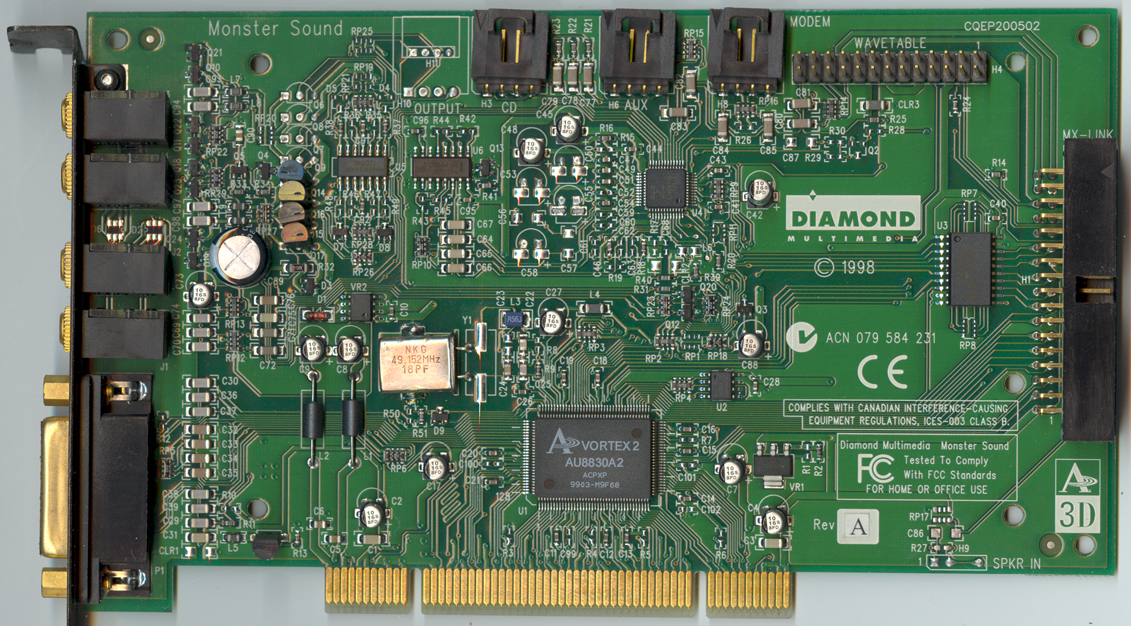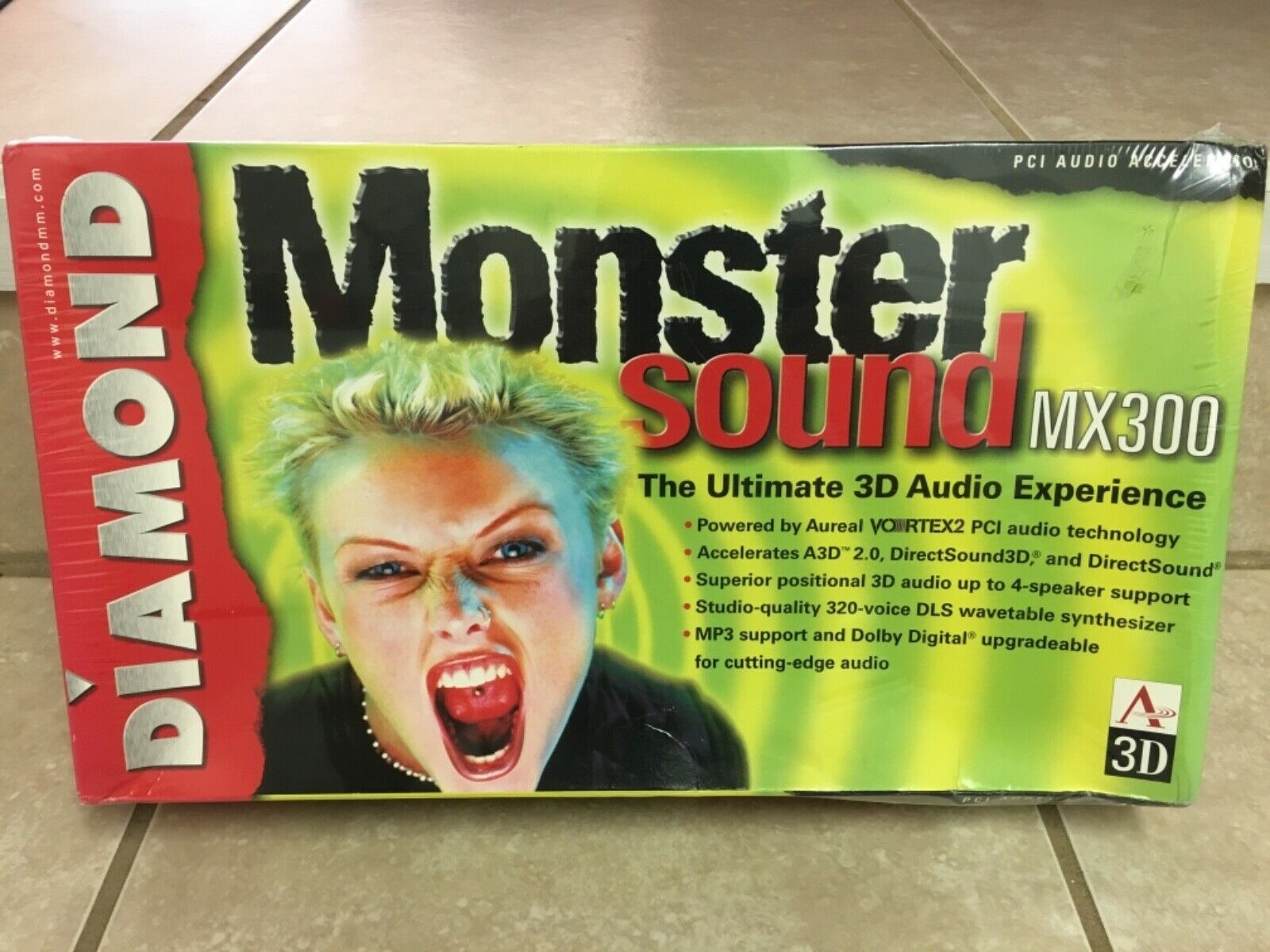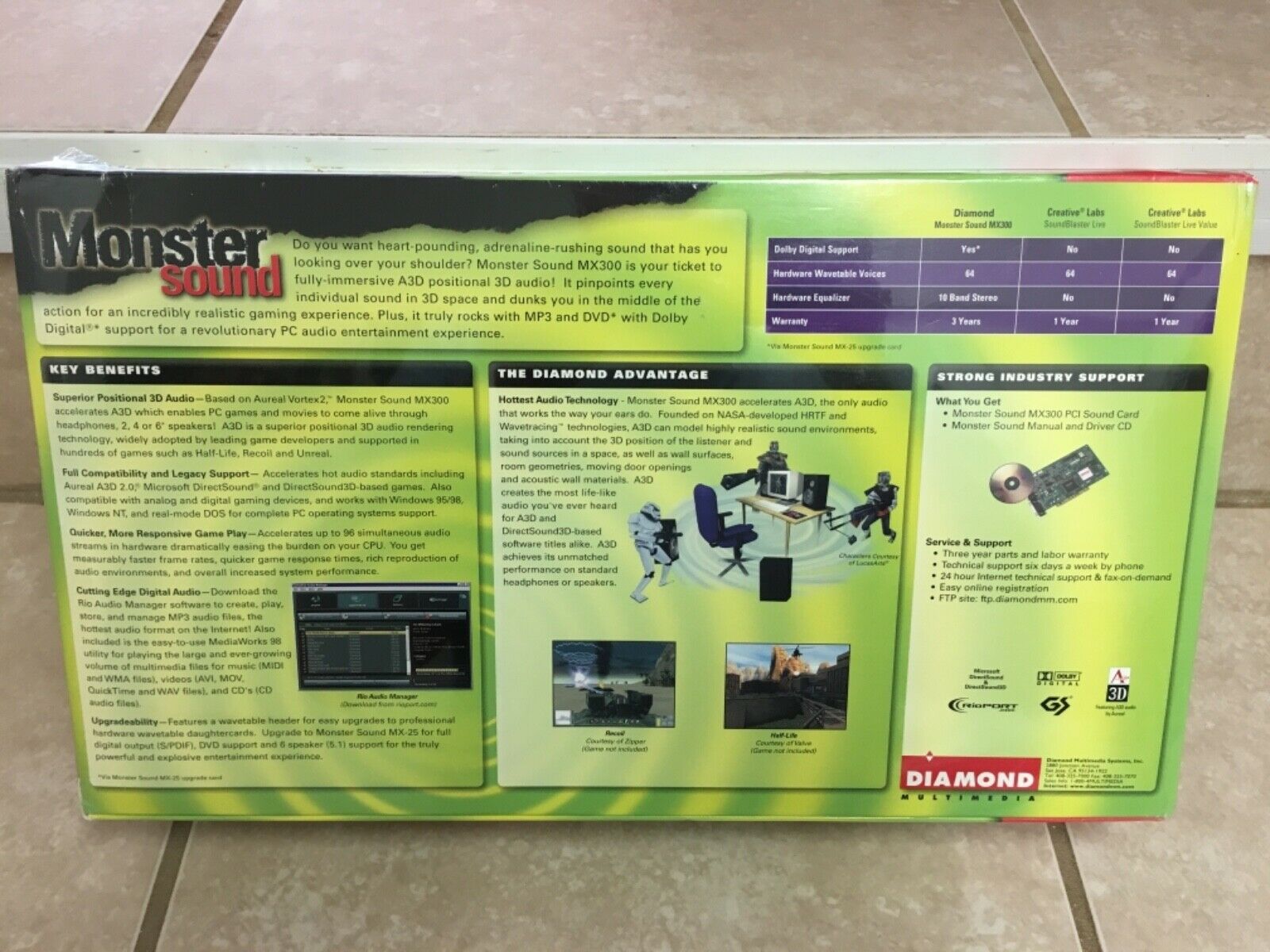Diamond Monster Sound MX300
The Monster Sound MX300 was released in 1998. It used the Aureal Vortex 2 chip with its A3D 2.0 technology to produce some of the very best 3D positional audio capability available. It also had an embedded DLS wavetable synthesizer with 320 voices.
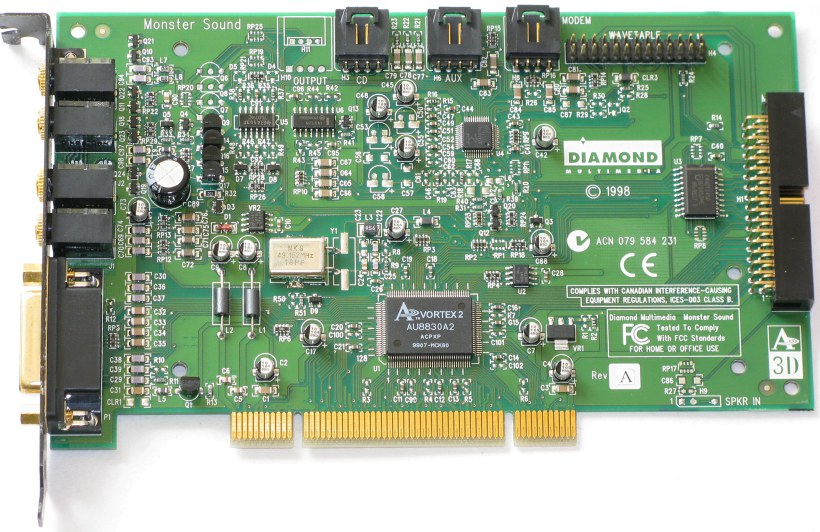 |
Released | Late 1998 |
| Bus | PCI | |
| Chipset | Aureal Vortex 2 (quad channel) | |
| Standards | Ad Lib, Sound Blaster, Sound Blaster Pro, General MIDI, Roland MPU-401, Windows Sound System, A3D | |
| Memory | None | |
| CD-ROM | None | |
| Ports | Line In, Line Out, Mic In, Speaker Out, Game/MIDI Port, Wavetable header | |
| Part # | ||
| FCC ID | ||
| Price | At launch: $99 | |
| See Also |
The card also supports Dolby Digital for 2- or 4-speaker output, and up to 6 speakers with an optional S/PDIF daughtercard (the Diamond Monster Sound MX25) via its MX-Link connector (see connector on far right).
For use in DOS, the card claims real mode DOS compatibility, though this is handled by emulation, rather than having a dedicated OPL chip.
The card had an excellent Signal to Noise Ratio of -96 dB.
In playback [digital-to-analogue] tests conducted by PCAVTech, the MX300's signal-to-noise (SNR) ratio was measured at -77 dB, which is considered very good.
The MX300 was bundled with Compaq Presario desktops such as the 5600i in early 1999, along with JBL Pro Premium speakers with a subwoofer. It was also bundled with the Alienware Hive-Mind PC in March 1999 which came with Cambridge Audio 4-point surround speakers and a sub. Both of these machines were Pentium II 450 MHz with 128 MB of SDRAM.
Board Revisions
In the Media
While we haven't seen an MX300 at press time, its feature checklist got us hot enough to look away from the packed Sound Blaster Live! card for a moment. Consider the wave-tracing technology and quad-speaker support, and then factor in the AC-3 or Digital Dolby virtualization down to two or four speakers. Toss in a suite of MPEG-3 applications and we had to have a drink of cold water to calm down.
But there's some bad news for budget shoppers waiting for no-name Vortex 2 clones to hit the shelf at $29. Aureal has signed exclusive deals with five vendors around the world to use the Vortex 2. The U.S. market will see Diamond and Turtle Beach pumping out Vortex 2s, with Diamond apparently out to capture the marketing spotlight early.
Creative Labs isn't sitting on its hands, though. Although the features are mostly meaningless with the current generation of games, Creative said it will quadruple the number of DirectSound3D streams from 8 to 32 in hardware. The Vortex 2 currently supports 16, but in response to Creative's announcement of 32 streams, now says the Vortex 2 can max with 76 DirectSound3D streams. The Live! will also eventually support AC-3 decoding as well. Until we see titles that scale up to use the amount of 3D sound channels, it's just marketing hype.
Diamond has priced the MX300 at a competitive $99. With Creative Labs' Sound Blaster Live! Value Edition, basically the Live! without the fancy-schmancy digital I/O connectors, coming in at $99, you'll spend a long time fidgeting in the aisle." Maximum PC, November 1998
Setting it Up
Downloads
Operation Manual The original user guide for the MX300. |
Driver & Utility CD Contains drivers for Windows 95/98 and NT 4.0. |
|
More Pictures

